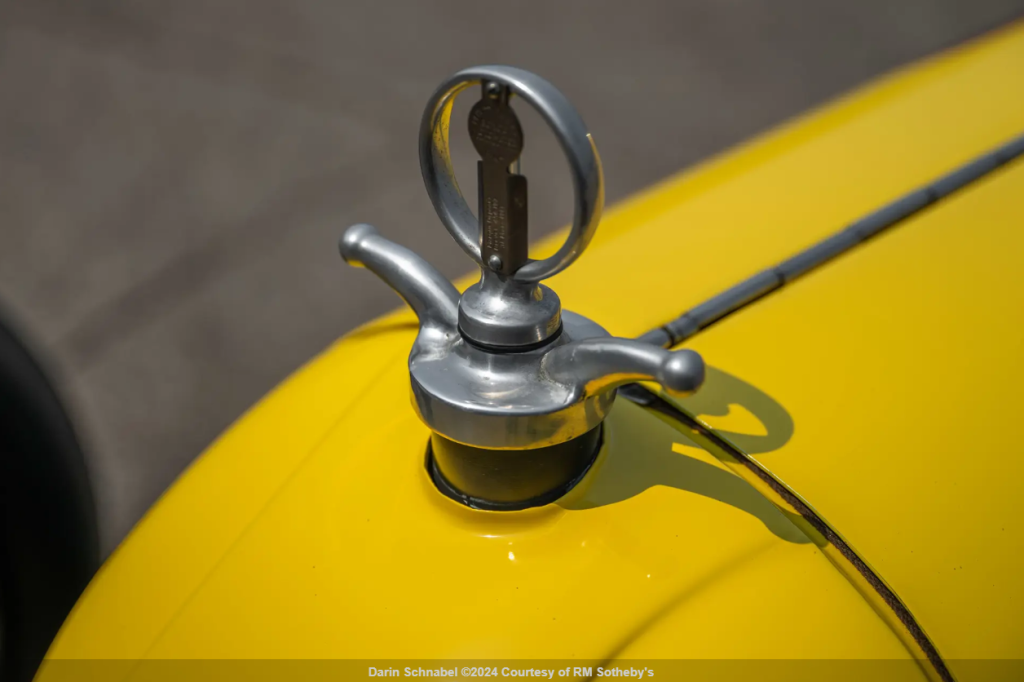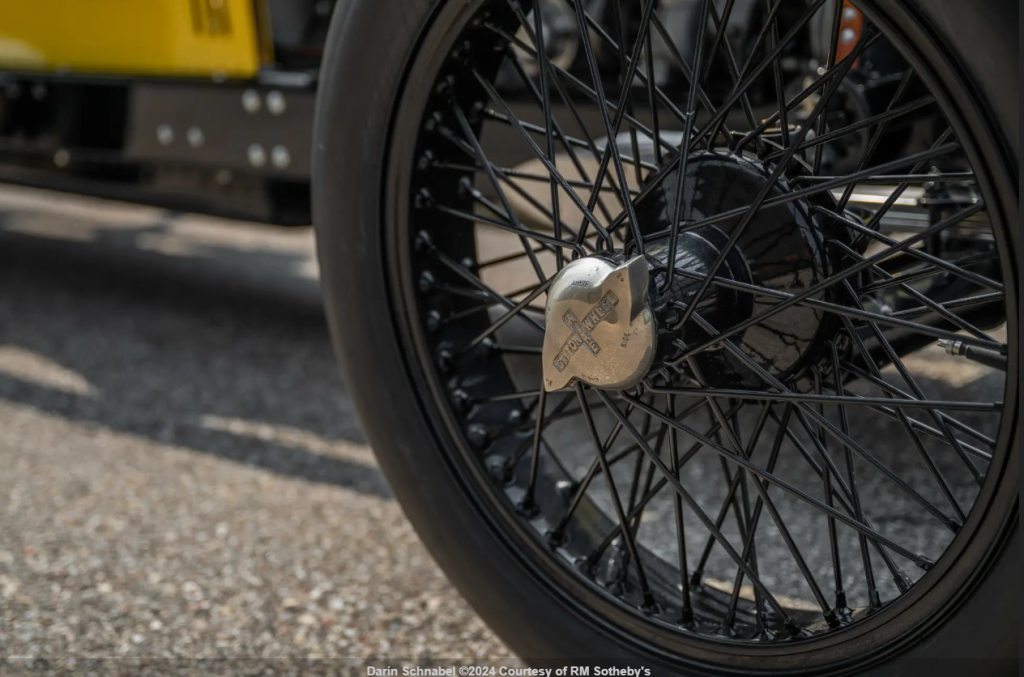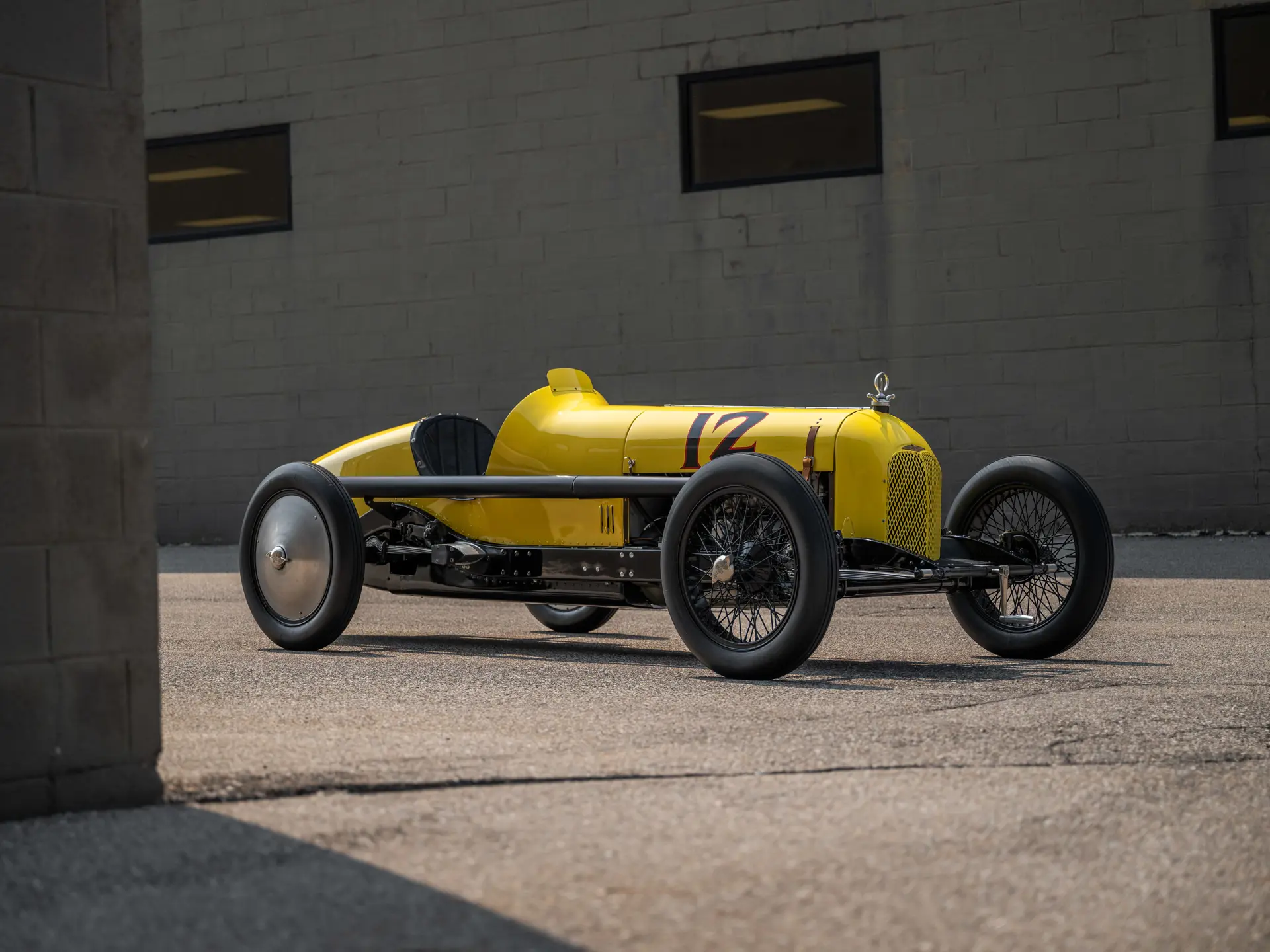The “Immortal Banana Wagon” is a living testament to a golden age of American racing, innovation, and the relentless pursuit of speed. Driven by Pete DePaolo to victory in the 1925 Indianapolis 500, this Duesenberg creation carved out a significant place in automotive history.
With its vibrant color, cutting-edge engineering, and a backstory reading like a racing epic, the “Immortal Banana Wagon” stands as a work of art and a symbol of engineering prowess.
In this piece, we’ll dive into the historical context of this remarkable machine, its technical brilliance, and its recreation under the hands of passionate collectors. We’ll explore why the “Immortal Banana Wagon” remains a critical artifact in the collector’s market today.
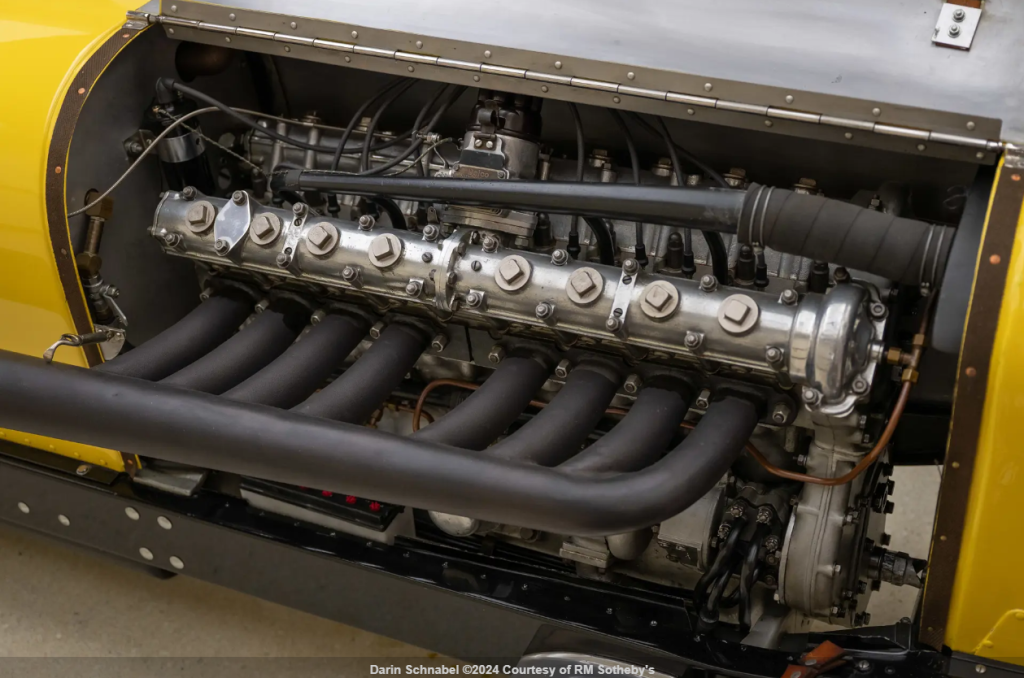
A Duesenberg Racing Legacy Built on Innovation
The Duesenberg brothers, Fred and Augie, were innovators in every sense of the word. Known today for the luxurious Model J, their fame built in the world of motorsport, where their engines were admired for their power and reliability. The Duesenberg inline eight-cylinder engine, debuting at the Indianapolis 500 in 1919, was a game-changer in the racing world.
Fred Duesenberg’s vision to create the fastest and most efficient racing engines led to continuous improvements. By 1923, the Duesenberg 122-cubic-inch engine underwent a significant transformation, adopting dual overhead camshafts and four valves per cylinder.
This advanced engineering allowed the engine to breathe better, rev higher, and ultimately produce greater power, a necessity on the high-speed ovals like Indianapolis.
Pete DePaolo and the 1925 Indianapolis 500 Victory
While the 1924 Indianapolis 500 marked a milestone for Duesenberg with Joe Boyer’s victory, Pete DePaolo truly solidified the legacy in 1925. Piloting a supercharged 122-cubic-inch Duesenberg, DePaolo won the prestigious race while setting a new average speed record of 101.13 mph—a record standing unchallenged for seven years.
This victory was a testament to DePaolo’s skill as well as Duesenberg’s mastery of engine technology. The supercharged engine, with its high-compression, dual-overhead-cam configuration, was years ahead of its time. DePaolo affectionately dubbed the car the “Immortal Banana Wagon” because of its bright yellow color and its ability to consistently secure winnings, or as he put it, “win so many bananas.”
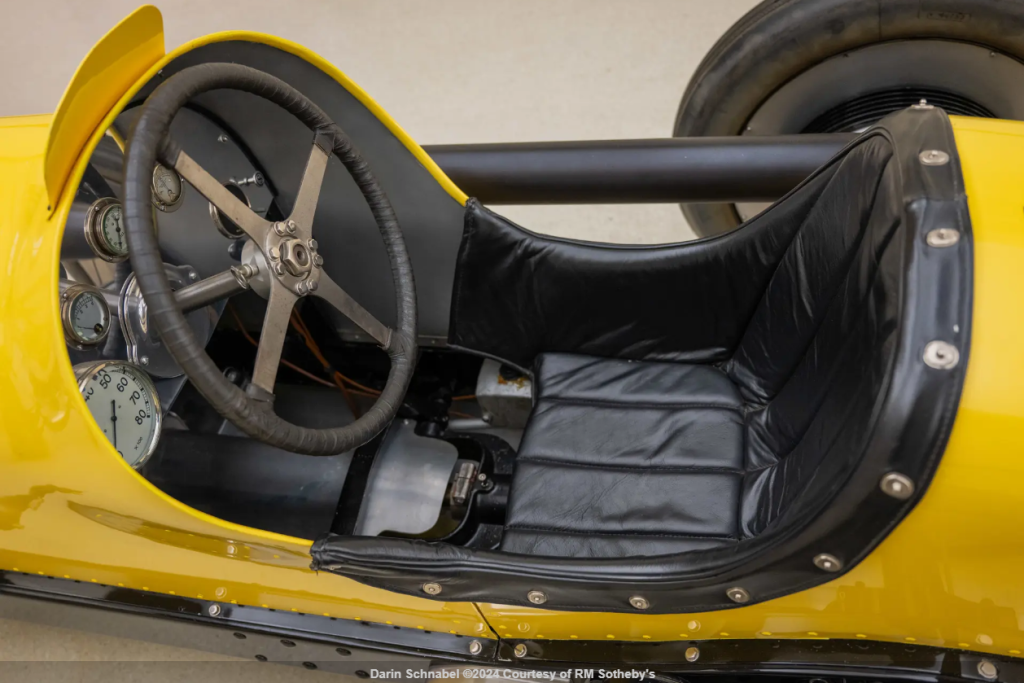
The Technical Evolution of the Duesenberg 122-Cubic-Inch Engine
The heart of the “Immortal Banana Wagon” was its engine, and the Duesenberg 122-cubic-inch was a marvel of early 20th-century engineering.
Initially, the Duesenberg engines incorporated four valves per cylinder, which provided a significant boost in airflow and combustion efficiency. This was paired with a dual-overhead-cam design allowing for higher engine speeds.
In 1924, the Duesenberg team made a critical decision: they simplified the combustion chamber design, transitioning to two-valve hemispherical combustion chambers. This change seemed like a step back, but it was a calculated move.
The hemispherical design allowed for better flame propagation and combustion, crucial for maintaining reliability during long endurance races like the Indianapolis 500.
Supercharging was another critical innovation. By forcing more air into the engine, the supercharger increased the density of the intake charge, allowing the engine to burn more fuel and produce higher power.
This technology was cutting-edge in the 1920s and gave Duesenberg a competitive edge over rivals like Alfa Romeo and Bugatti, who later adopted similar strategies.
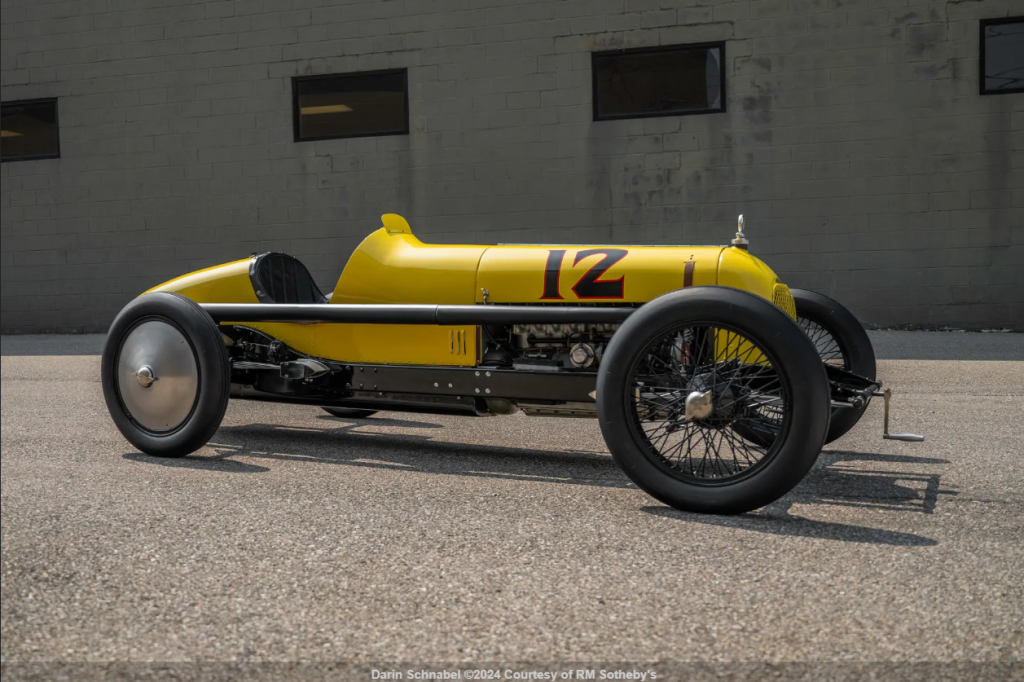
The Restoration: A Labor of Passion and Precision
The car existing today as the “Immortal Banana Wagon” is a carefully restored recreation, but the attention to detail makes it as close to the original as possible. When racing historian and collector David Uihlein acquired the remnants of the original Duesenberg 3.0-liter engine, he set out on a mission to bring the iconic machine back to life.
The restoration process involved some of the best specialists in early competition cars. Joe Silnes, known for his expertise in period-correct race car bodywork, recreated the chassis and body.
Meanwhile, Chris Leydon, a renowned authority on early racing engines, assembled the heart of the car using original Duesenberg components and meticulously crafted reproductions.
Key to the restoration was the work of E.J. Healy, who sketched out the plans for the engine using the surviving Duesenberg aluminum block, crankcase, and gear tower Uihlein acquired.
Healy’s expertise, combined with the craftsmanship of English patternmakers and casting experts, resulted in a faithful recreation of the Duesenberg engine powering the original Banana Wagon to victory in 1925.
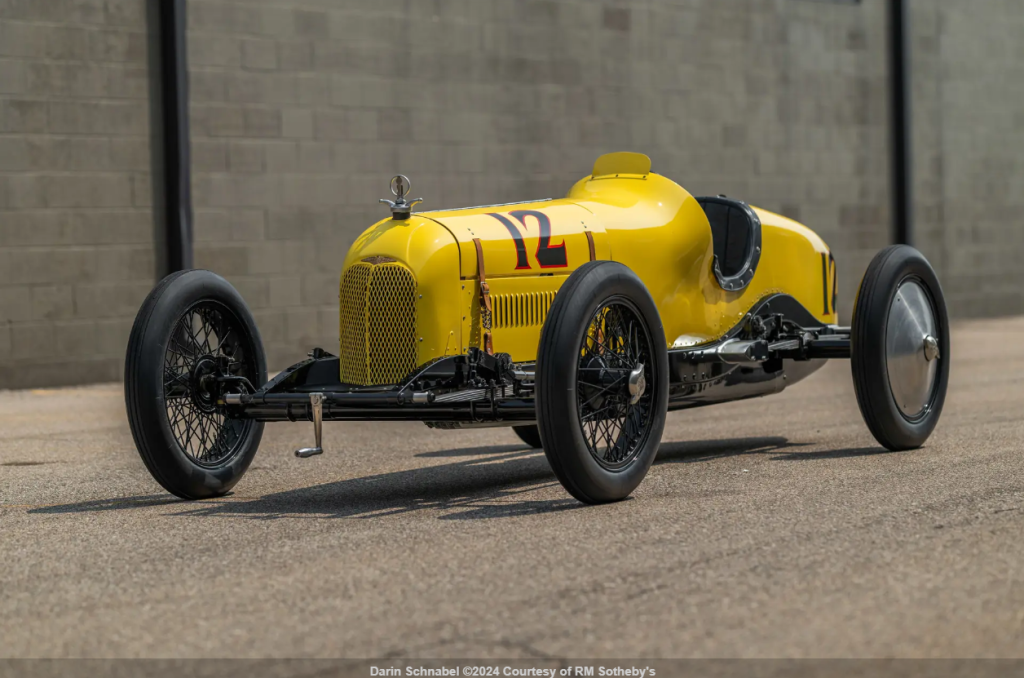
The Sole Surviving 3.0-Liter Duesenberg Straight-Eight
What sets this recreation apart is the engine. Believed to be the only surviving 3.0-liter Duesenberg straight-eight from this era, it’s a rare piece of American racing history. While other Duesenberg race cars from the 1920s were either lost or modified beyond recognition, the “Immortal Banana Wagon” retains the DNA of the original 1925 car.
This engine is a work of art. The dual-overhead-camshaft configuration, the supercharger, and the period-correct castings serve as a tribute to Fred Duesenberg’s genius. The attention to detail in recreating this engine, from the reground cams by Joe Gemsa to the final machining by Uihlein’s own Banner Welding Systems, is a testament to the passion behind this restoration.
The Collector’s Perspective: Rarity and Value
For collectors, owning a piece of automotive history like the “Immortal Banana Wagon” goes beyond mere possession. This car represents a significant chapter in the evolution of American racing and the Duesenberg marque.
As one of the few privately held Duesenberg competition cars, it holds a special place in the collector’s market.
The combination of rarity, historical significance, and the quality of the restoration makes the “Immortal Banana Wagon” an invaluable addition to any collection.
In recent years, the value of vintage racing cars skyrocketed, driven by demand from wealthy collectors and the limited supply of truly exceptional examples. Duesenberg race cars, in particular, are highly sought after due to their racing pedigree and association with American innovation.
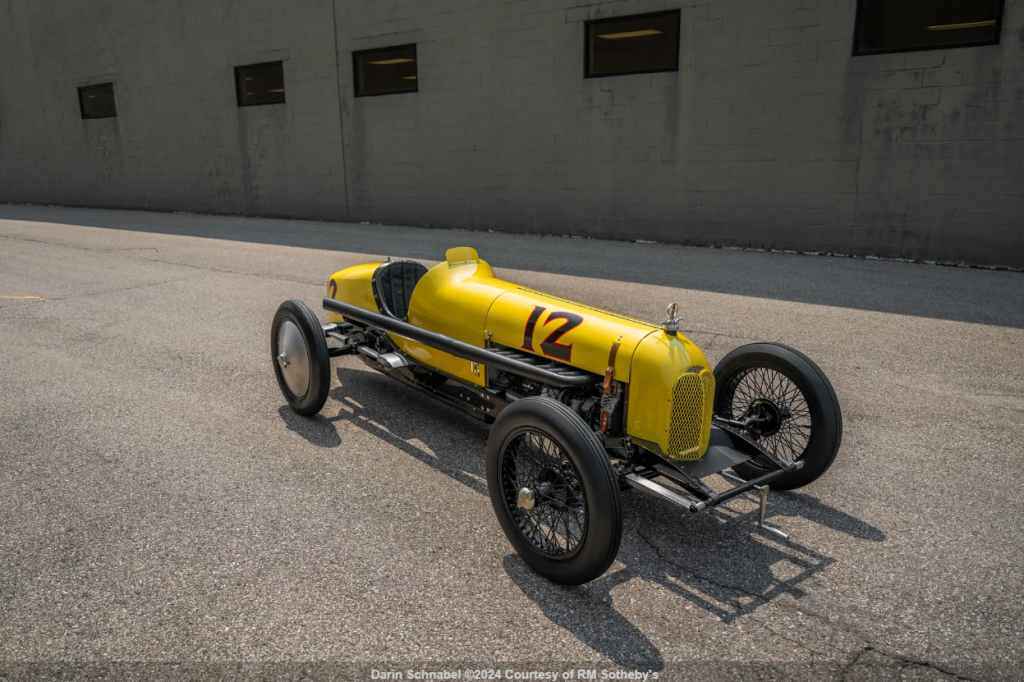
The Legacy of Fred and Augie Duesenberg
Fred and Augie Duesenberg left an indelible mark on the automotive world. While their name often associated with the luxurious Model J, it was their racing engines propelling them to fame. The Duesenberg brothers were pioneers in engine design, and their innovations in the 1920s laid the groundwork for many of the advancements seen in modern engines today.
Their legacy lives on in cars like the “Immortal Banana Wagon.” This car isn’t just a museum piece; it’s a functioning example of the Duesenberg brothers’ engineering genius. The fact it remains a competitive machine nearly a century after its initial design is a testament to the durability and foresight of Fred and Augie’s work.
Conclusion: The Immortal Legacy of the “Banana Wagon”
The “Immortal Banana Wagon” is a rare and exceptional recreation capturing the spirit of a bygone era of racing. From Pete DePaolo’s record-setting victory at the 1925 Indianapolis 500 to the painstaking restoration led by David Uihlein, this car embodies the brilliance of Duesenberg engineering and the passion of the collectors preserving automotive history.
Today, the “Immortal Banana Wagon” serves as both a tribute to the glory days of American racing and a reminder of the ingenuity propelling Duesenberg to the forefront of motorsport. It’s a piece of history , like its namesake, will remain immortal in the world of vintage cars and competitive racing.
